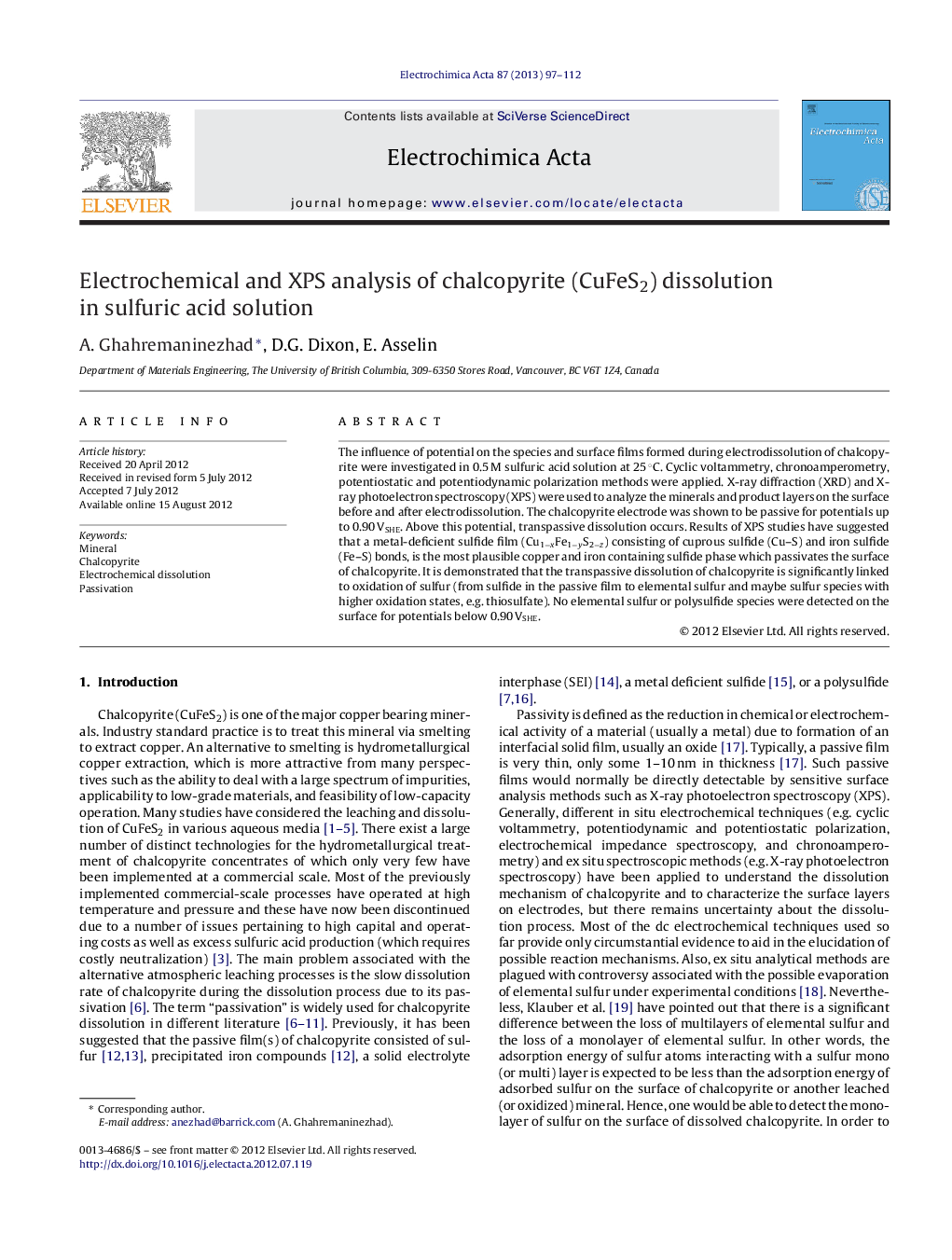| Article ID | Journal | Published Year | Pages | File Type |
|---|---|---|---|---|
| 187966 | Electrochimica Acta | 2013 | 16 Pages |
The influence of potential on the species and surface films formed during electrodissolution of chalcopyrite were investigated in 0.5 M sulfuric acid solution at 25 °C. Cyclic voltammetry, chronoamperometry, potentiostatic and potentiodynamic polarization methods were applied. X-ray diffraction (XRD) and X-ray photoelectron spectroscopy (XPS) were used to analyze the minerals and product layers on the surface before and after electrodissolution. The chalcopyrite electrode was shown to be passive for potentials up to 0.90 VSHE. Above this potential, transpassive dissolution occurs. Results of XPS studies have suggested that a metal-deficient sulfide film (Cu1−xFe1−yS2−z) consisting of cuprous sulfide (Cu–S) and iron sulfide (Fe–S) bonds, is the most plausible copper and iron containing sulfide phase which passivates the surface of chalcopyrite. It is demonstrated that the transpassive dissolution of chalcopyrite is significantly linked to oxidation of sulfur (from sulfide in the passive film to elemental sulfur and maybe sulfur species with higher oxidation states, e.g. thiosulfate). No elemental sulfur or polysulfide species were detected on the surface for potentials below 0.90 VSHE.
► The chalcopyrite electrode was shown to be passive for potentials up to 0.90 VSHE. ► Metal-deficient sulfide film passivates chalcopyrite. ► Transpassive dissolution is linked to oxidation of sulfide to elemental sulfur. ► No S0 or polysulfide species were detected for potentials below 0.90 VSHE. ► Potentiodynamic polarization cannot demonstrate chalcopyrite's electrodissolution.
